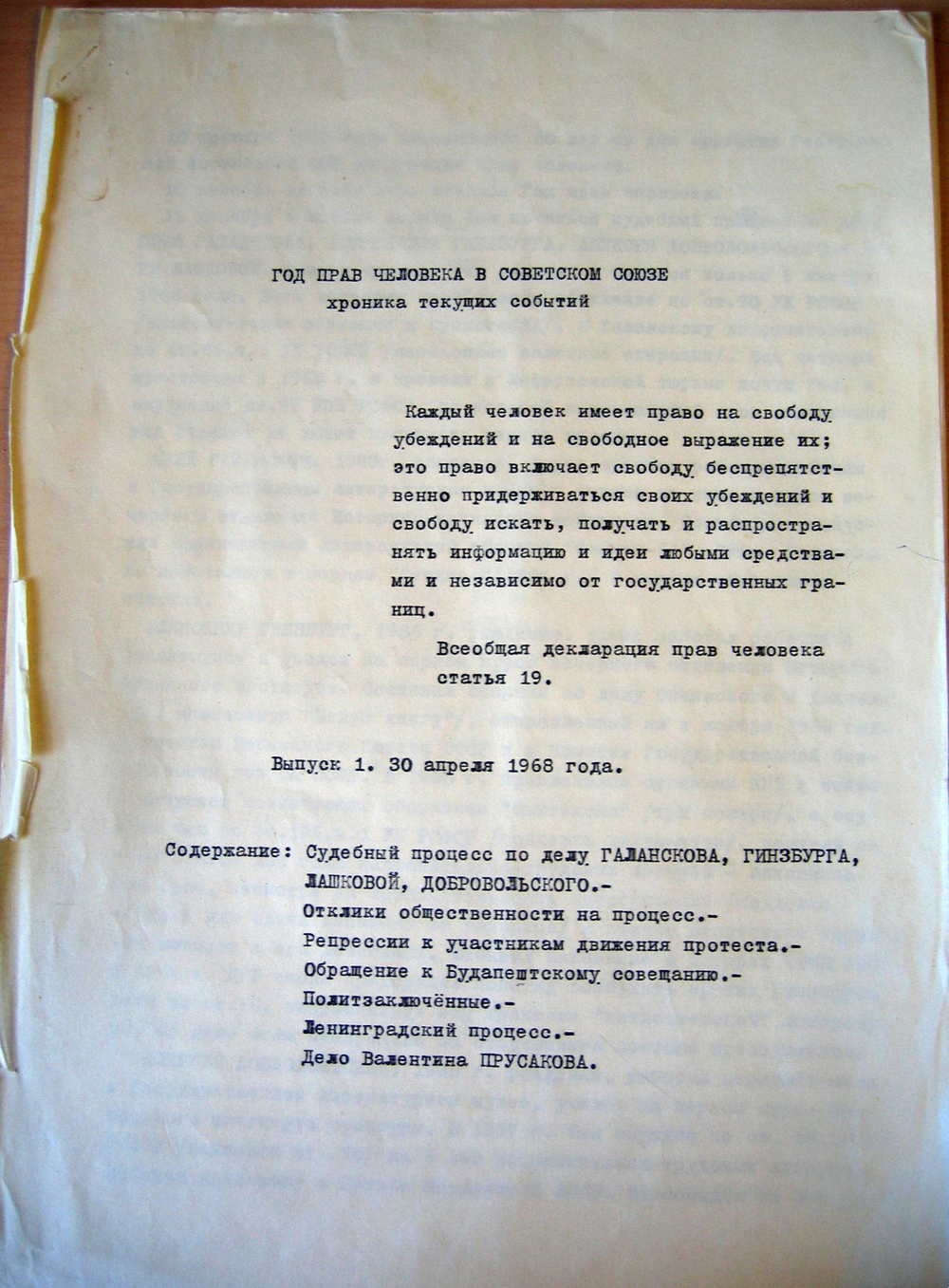Blog
Media old and new

An issue from the first year of Russian samizdat journal “Chronicle of Current Events”
MEDIA NEW…: The good folks over at the Future of Storytelling have always got an eye on the latest technologies and ways of telling stories. The latest weekly roundup on their blog, for example, links to stories about a collaborative storytelling platform called Storium that’s now in development, and the views of 10 major directors on the future of film. They’ve also got a live webcast of a conversation today at 12:30pm with filmmaker Tom Perlmutter, on the future of interactive documentary film. Technological novelties have their benefits for change-makers, but so do “outdated” media.
…AND OLD: In a New York Times opinion piece, Gal Beckerman writes that, with the Russian government restricting internet freedom, activists may want to look back to a medium that flourished during the last 20 years of the Cold War — samizdat, or self-published journals that were passed from hand to hand. “From subversive writing to reprinted material from the West,” Beckerman writes, “it was hand-typed on carbon paper, disseminated by hand and then copied out again.” He writes of one samizdat journal, Khronika (1968-1983), that had a smart — if not foolproof — way of protecting its readers and news-givers from persecution. In Krhonika’s fifth issue, in 1968, the journal’s first editor, Natalya Gorbanevskaya, added an anonymous note: “Anybody who is interested in seeing that the Soviet public is informed about what goes on in the country may easily pass on information to the editors of Khronika. Simply tell it to the person from whom you received Khronika, and he will tell the person from whom he received Khronika, and so on. But do not try to trace back the whole chain of communication yourself, or else you will be taken for a police informer.” (Links added, and did not appear in original New York Times piece.)
